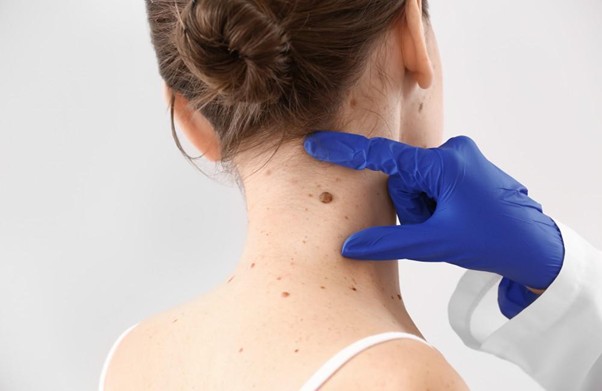
Skin tags are small, benign growths that appear on various parts of the body. While they’re medically harmless, many people choose to remove them for cosmetic reasons or due to irritation caused by clothing or jewelry. Let’s dive into the facts, procedures, and safety concerns related to this increasingly popular treatment.Procedures are generally quick and minimally invasive. In the context of growing interest in cosmetic dermatology across the globe, treatments like Skin Tag Removal in Dubai Silicon Oasis are gaining attention due to accessibility and evolving technologies.
Understanding Skin Tags
What Are Skin Tags?
Skin tags, or acrochordons, are soft, skin-colored growths that hang off the skin by a thin stalk. They are made up of blood vessels and collagen and usually develop in areas where skin rubs against skin or clothing, such as the neck, armpits, groin, and eyelids.
Who Gets Them?
Skin tags can appear in anyone, but they are more common in:
-
Adults over 40
-
People with obesity
-
Individuals with diabetes
-
Pregnant women due to hormonal changes
-
Both men and women equally
Is Skin Tag Removal Safe for All Genders?
Yes – With Professional Guidance
The good news is that skin tag removal is generally considered safe for all genders. Whether male, female, or non-binary, the biological composition of the skin does not significantly differ when it comes to treating skin tags. What matters more is the size, location, and number of skin tags rather than the person’s gender.
Factors That Ensure Safety
-
Correct Diagnosis: It’s essential to confirm the growth is a skin tag and not something else.
-
Sterile Tools & Environment: Clean conditions reduce infection risks.
-
Expert Handling: A skilled professional ensures minimal discomfort and scarring.
-
Skin Sensitivity: Some individuals may have more reactive skin, but this isn’t gender-specific.
Methods for Skin Tag Removal
There are several clinically approved methods for removing skin tags. Each method is chosen based on the size and location of the tag.
| Removal Method | Description | Best For | Healing Time |
|---|---|---|---|
| Cryotherapy | Freezing the skin tag using liquid nitrogen | Small skin tags | 7–10 days |
| Electrocautery | Burning off the tag with electric current | Medium to large tags | 5–7 days |
| Excision | Cutting off the tag with a sterile scalpel | Single or larger skin tags | 7–14 days |
| Laser Removal | Using laser beams to vaporize the skin tag | Sensitive areas like eyelids | 5–10 days |
| Ligation | Tying off the tag to cut blood supply until it falls off | Smaller tags at home/clinics | 1–2 weeks |
Treatment Process: What to Expect
Consultation
The process begins with a physical examination of the skin tag. The professional evaluates:
-
Number and size of skin tags
-
Their location on the body
-
Skin type and medical history
Choosing the Right Method
Based on the evaluation, the most appropriate removal method is selected. For example, laser might be preferred for the face, while excision might be used for larger tags.
Preparation
The area is cleansed, and local anesthesia may be applied to ensure a painless experience.
Removal
The chosen method (e.g., cryotherapy, excision, or laser) is used to remove the skin tag.
Aftercare
Post-procedure, the skin may be treated with antiseptic ointment. You’re usually advised to avoid direct sun exposure and vigorous physical activity for a few days.
Does Gender Affect the Outcome?
While hormones and skin thickness can vary between genders, they don’t have a major influence on the success or safety of skin tag removal. Here’s a breakdown of gender-related concerns:
| Gender Identity | Considerations |
|---|---|
| Male | Thicker skin in some areas, facial hair around removal sites |
| Female | Hormonal changes during pregnancy or menopause can cause more tags |
| Non-binary/Transgender | May experience skin changes due to hormone therapy, which can be managed |
Is Skin Tag Removal Painful?
Most removal treatment involve minimal to no pain, especially when local anesthetics are used. Some patients may feel slight stinging or discomfort post-procedure, but it’s usually mild and temporary.
Benefits of Professional Skin Tag Removal
-
Quick and safe procedure
-
Minimal scarring
-
Reduced chance of recurrence
-
Suitable for all skin types and genders
-
Immediate improvement in skin appearance
FAQ’s:
Can I remove skin tags at home if I’m male/female/non-binary?
Home remedies exist but aren’t always safe or effective. It’s better to have a professional assess and remove the skin tags, especially those in sensitive areas.
Is the skin tag removal process different for men and women?
Not significantly. While men may have thicker skin and women might have hormone-related tags, the process remains largely the same.
Are there more effective methods for certain genders?
Effectiveness is based more on tag size and location than gender. All genders can benefit equally from methods like cryotherapy, laser, or excision.
Can hormonal treatments influence skin tag growth or removal?
Yes, hormone therapies (like those used in transgender care or during pregnancy) may increase skin tag formation. Removal remains safe, but consultation is essential.
How soon can I resume my regular activities?
Most people can return to normal activities within a day or two, depending on the method used and the treated area.
Conclusion
Skin tag removal is a safe, reliable, and effective procedure suitable for all genders. The key lies in receiving proper evaluation and opting for professional methods that match your skin type and tag location. Whether you’re male, female, or non-binary, the process and outcomes remain consistent, ensuring everyone can enjoy smoother, blemish-free skin with confidence.



